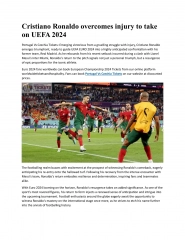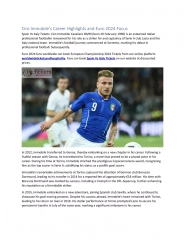
Parenteral Fluid Therapy: Types of Solutions for Intravenous Therapy
Learn about parenteral fluid therapy and the different types of solutions used for intravenous therapy, including isotonic, hypertonic, and hypotonic solutions. Understand the distribution of body fluids and their importance in maintaining balance within the body. Explore the benefits and applications of intravenous therapy in delivering fluids directly into the bloodstream for rapid effects.
Download Presentation

Please find below an Image/Link to download the presentation.
The content on the website is provided AS IS for your information and personal use only. It may not be sold, licensed, or shared on other websites without obtaining consent from the author. If you encounter any issues during the download, it is possible that the publisher has removed the file from their server.
You are allowed to download the files provided on this website for personal or commercial use, subject to the condition that they are used lawfully. All files are the property of their respective owners.
The content on the website is provided AS IS for your information and personal use only. It may not be sold, licensed, or shared on other websites without obtaining consent from the author.
E N D
Presentation Transcript
Lecture 10 Subject Parenteral Fluid Therapy Theoretical Prepared by Dr. Ali Ahmed Dr: Hayder Mohammed Dr. Rania Abd ElmohsenAbo Elnour
Intravenous therapy is administration of liquid substances directly into a vein and the general circulation through venipuncture. is an effective and efficient method of supplying fluid directly into intravenous fluid compartment producing rapid effect, with availability of injecting large volume of fluid more than other method of administration.
Distribution of Body Fluids Extracellular fluid (ECF) Intracellular fluid (ICF)
Isotonic A solution that has the same salt concentration as the normal cells of the body and the blood. Ex: 1- 0.9% NaCl (Metabolic alkalosis, Hyponatremia, Shock, Resuscitation) 2- Ringer Lactate (Dehydration, Burns, GI tract fluid loss, Acute blood loss, Hypovolemia) 3- D5W (Fluid loss, dehydration, Hypernatremia)
Hypertonic A solution with a higher salts concentration than in normal cells of the body and the blood EX: 1- 5%Dextrose in 0.9% Nacl (D5NS): (Heat related disorders, Peritonitis) 2- 5%Dextrose in Lactated Ringers ( (D5LR): (Hypovolemic shock, Hemorrhagic shock)
Hypotonic A solution with a lower salts concentration than in normal cells of the body and the blood. Ex: 1-D5W in half normal Saline . 2- D10W. uses 1- Treatment of hypertonic dehydration. 2- Gastric fluid loss 3- Cellular dehydration from excessive diuresis 4- Slow rehydration
Types of infusion set 2- Micro drip 1- Macro drip 3- Blood set
Drops per minute are calculated by the following formula:
Nursing management 1- Verify prescription for IV therapy, check solution label and identify patient. Check for allergies 2. Explain procedure to patient. 3. Perform hand hygiene and put on disposable nonlatex gloves 4. Apply a tourniquet 4 to 6 inches above the site and identify a suitable vein. 5. Choose site, Choose IV cannula.
6. Prepare equipment by connecting infusion bag and tubing, run solution through tubing to displace air and cover end of tubing. 7. Position patient s arm below heart level to encourage capillary filling. 8. Palpate for a pulse distal to the tourniquet. Ask patient to open and close fist several times. 9. Prepare site by scrubbing with povidone iodine swabs for 2 to 3 minutes in circular motion, moving outward from injection site.
10. Holding needle bevel up and at 5- to 25-degree angle, 11. If backflow of blood is visible, straighten angle and advance needle. 12. Release tourniquet and attach infusion tubing; open clamp enough to allow drip. 13. Cover the insertion site with a transparent dressing bandage, or sterile gauze.
Complications A- Infiltration: 1- Needle / cannula displacement. 2- Blood leak from IV site. S\S (pain/redness/swelling/diminished flow rate) B- Air Embolism: 1- Air in IV tubing (IV bag has emptied) S\S (decreased or weak BP, rapid pulse and cyanosis). C- Infection: Note any signs of redness , pain , swelling hot to touch and yellow discharge
D- Circulatory (fluid) overload: 1- The cardiovascular system is unable to cope with the IV rate & volume. 2- The patient becomes pale , sweaty and short of breath. S\S headache, dyspnea, raised BP, flushed skin, fluid imbalance(volume infused vs volume excreted). E- Allergic reaction: 1- Note any known allergies & document 2- Observe for any reaction to IV additives e.g: IV antibiotics / blood products.






















